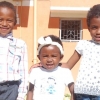
Peste In Madagascar

30 morti in meno di due mesi e si teme che l'epidemia colpisca le città e non solo lo campagne come negli anni passati. Vietati i raduni pubblici, chiuse le scuole.
Trenta morti e 194 infettati da agosto a oggi. Nel 2016 i morti sono stati 63 in tutto l’anno con 275 infezioni. Sono i numeri della peste in Madagascar. Sì, la peste quella che per noi è legata al Medioevo e ai Promessi Sposi. L’isola africana è soggetta ogni anno a epidemie, ma gli esperti non ne ricordano una grave come quella partita nel mese di agosto.
L'epidemia attuale di peste è soprattutto polmonare, la forma più micidiale: è capace - riferiscono gli esperti - di uccidere in 24 ore e si trasmette tossendo.
La peste è considerata endemica in Madagascar, ma è di solito limitata a zone isolate, nelle campagne, non in città. Quest’anno invece il focolaio è più ampio e la malattia si è diffusa anche nella capitale Antananarivo e in altre grandi città, come Taomasina. Per limitare la diffusione sono state chiuse scuole e università. Il governo ha fatto partire una campagna di disinfestazione delle aule e cancellato tutti i raduni pubblici.
«Avere a che fare con la peste nel ventunesimo secolo è umiliante – ha detto un avvocato malgascio al giornale francese Le Monde. Ci viene detto di portate delle maschere, poi di non portarle. Non sappiamo cosa fare». Il timore è grande nel paese. Le farmacie sono state prese d’assalto nella capitale. Le vendite di Cotrim, un medicinale che è considerato utile per prevenire il contagio sono andate alle stelle e si scambia al mercato nero.
In Madagascar, la peste è riapparsa attorno al 1980. Di solito ritorna annualmente da marzo a ottobre. Nel 2017 il primo caso è stato registrato già alla fine di agosto. L’Oms ha stanziato 250mila dollari e punta ad arrivare a un milione e mezzo per debellare del tutto il morbo. Il timore delle autorità sanitarie è che ci sia un rischio di propagazione a livello nazionale.
L’organizzazione mondiale della sanità la considera una delle malattie della povertà. È provocata da un batterio, lo Yersinia pestis, che si sviluppa nei ratti e viene portato dalle pulci. Se si punti dagli insetti la peste tende a svilupparsi nella forma bubbonica. Il batterio invece colpisce i polmoni. Provoca la polmonite e la trasmissione avviene per aerea. Se diagnosticata in tempo la peste è curabile con antibiotici, ma bisogna contenere il contagio.

La mamma morì per complicazioni post parto, la nonna si fece carico di tutta la famiglia e il papà dopo un anno decise di partire in cerca di lavoro. Non è più tornato.

 home
home